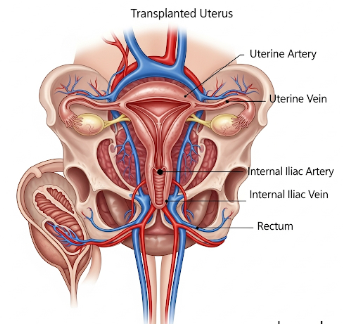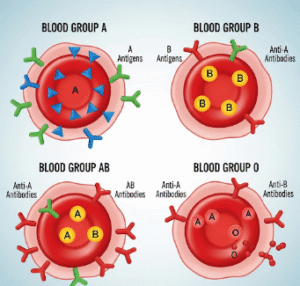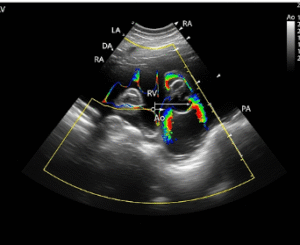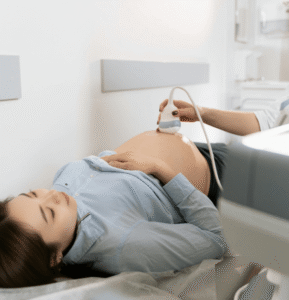Overview
A uterus transplant is a groundbreaking surgical procedure designed to help women who are unable to conceive due to uterine factor infertility (UFI). This condition may be caused by being born without a uterus (congenital absence), previous hysterectomy, or uterine damage that prevents pregnancy.
South Korea, with its advanced medical infrastructure and expertise in transplant medicine, is at the forefront of reproductive innovation. Korean hospitals are developing uterus transplantation programs that combine surgical precision, reproductive medicine, and IVF (in vitro fertilization). This allows women without a functional uterus the possibility to carry and deliver their own child.
What is a Uterus Transplant?
A uterus transplant is a complex surgery where a healthy uterus is transplanted into a woman who does not have one or has a non-functional uterus. Unlike other organ transplants, the uterus is not a life-saving organ but a life-enhancing organ, as it gives women the ability to conceive and experience pregnancy.
Sources for uterus donation:
- ➤ Living donors (often a close relative)
- ➤ Deceased donors (organ donation after death)
The transplant is typically temporary. Once a patient has successfully given birth, the uterus may be removed to eliminate the need for lifelong immunosuppressive medication.
What are the Benefits?
✔ Restores fertility in women with uterine factor infertility
✔ Allows natural pregnancy experience rather than relying solely on surrogacy
✔ Psychological and emotional benefits for women wishing to carry their own child
✔ IVF combined with transplant makes genetic parenthood possible
✔ Korean expertise ensures cutting-edge surgical techniques and close monitoring
Procedure Details:
1) How should I prepare for a Uterus Transplant?
- ● Medical evaluation: Hormonal studies, IVF readiness, overall organ function tests
- ● Donor matching: Finding a suitable living or deceased donor with compatible tissue type
- ● Psychological counseling: Assessing readiness for complex transplant and pregnancy journey
- ● Fertility preparation: Eggs are usually retrieved and embryos created via IVF before the transplant
- ● Korean hospitals provide: Multidisciplinary counseling with transplant surgeons, fertility specialists, and psychologists to ensure full preparation
2) What happens during the procedure Uterus Transplant?
- ➤ Anesthesia: Patient undergoes general anesthesia
- ➤ Donor uterus retrieval: The donor’s uterus is carefully removed, preserving blood vessels for reconnection
- ➤ Transplant surgery:
- Surgeons attach the uterus inside the recipient’s pelvis
- Blood vessels are connected to establish circulation
- Vagina and supporting ligaments are carefully attached for proper function
- ➤ Duration: The operation may take 8–12 hours due to its complexity
- ➤ Korean surgical approach: Leading centers often employ robotic-assisted or microsurgical techniques to reduce complications
3) What happens after a Uterus Transplant?
- ● Immunosuppressive medications are prescribed to prevent organ rejection
- ● Recovery in hospital: Typically 2–3 weeks with continuous monitoring
- ● IVF embryo transfer: Once healing is confirmed, embryos created before transplant are transferred to the uterus
- ● Pregnancy monitoring: High-risk pregnancy care with frequent checkups
- ● Post-delivery: After one or two successful pregnancies, the uterus may be surgically removed to stop immunosuppressive therapy
- ● Korean patient care model: Close follow-up with reproductive endocrinologists, obstetricians, and transplant surgeons working together
Risks / Benefits
✔ Key Benefits:
- ✦ Offers women with uterine infertility the chance to experience pregnancy
- ✦ Provides emotional fulfillment and improved quality of life
- ✦ Strong success rates in pioneering centers worldwide, with Korea advancing rapidly
⚠ Possible Risks:
- ➔ Risk of organ rejection despite immunosuppression
- ➔ Complications from long surgery (bleeding, infection, vascular problems)
- ➔ Immunosuppressive drug side effects (kidney damage, high blood pressure, increased infection risk)
- ➔ High-risk pregnancy requiring specialized care
- ➔ Limited availability and ethical considerations with donor selection
Recovery and Outlook
- ➤ Immediate recovery takes 4–6 weeks, but long-term monitoring continues for years
- ➤ Pregnancy success rates are steadily improving, with live births recorded in several countries
- ➤ In Korea, outlook is strong as hospitals integrate advanced reproductive medicine with transplant programs
- ➤ Psychological and physical rehabilitation is part of the care plan
- ➤ Most patients achieve safe deliveries by cesarean section under close medical supervision
When To Call the Doctor
Patients should seek urgent medical help if they experience:
- ⚠ Severe abdominal pain or heavy bleeding
- ⚠ Signs of rejection (fever, pelvic pain, unusual discharge)
- ⚠ Difficulty urinating or bowel obstruction
- ⚠ Persistent nausea, vomiting, or dehydration
- ⚠ Unusual pregnancy symptoms such as reduced fetal movement or sudden swelling
Best Korea Option / Process
South Korea is emerging as a global leader in uterus transplantation, combining reproductive medicine, IVF expertise, and advanced surgery.
Key strengths of Korean programs:
- 🌟 Multidisciplinary teams of transplant surgeons, IVF specialists, and maternal-fetal medicine experts
- 🌟 Robotic and microsurgical approaches for precision
- 🌟 Strong ethical frameworks ensuring safe donor-recipient matching
- 🌟 Personalized IVF programs for embryo preparation before transplant
- 🌟 State-of-the-art hospitals with advanced recovery and neonatal care units
Top Korean hospitals leading in reproductive and transplant medicine include:
- ✅ Asan Medical Center
- ✅ Seoul National University Hospital
- ✅ Samsung Medical Center
- ✅ Severance Hospital (Yonsei University)
These hospitals are continuously researching, refining, and offering uterus transplant programs, making Korea a promising destination for women seeking fertility restoration.
✅ Quick Highlights Recap
- ➤ Uterus transplant treats uterine factor infertility
- ➤ Donors may be living or deceased
- ➤ IVF embryos are prepared before surgery
- ➤ Surgery takes 8–12 hours with complex microsurgical steps
- ➤ Pregnancy is possible after transplant, but high-risk
- ➤ Uterus removal often follows childbirth to stop immunosuppressants
- ➤ Korean hospitals offer advanced, multidisciplinary care for this cutting-edge treatment












